Description
The Balor sCMOS platform revolutionizes the field of astronomy by addressing the critical need for high resolution, expansive field of view, and exceptional sensitivity combined with unparalleled speed. Traditional large area CCD technology often falls short in this regard, typically requiring over 40 seconds to readout a single frame while maintaining low noise levels. Balor's innovative design meets these demands by enabling the measurement of photometric and astrometric variability across timescales from milliseconds to tens of seconds, making it an ideal solution for dynamic astronomical applications.
The Balor 17F-12 is equipped with a unique sensor exclusive to Andor, allowing it to achieve an impressive 54 frames per second at full 16.9 MP resolution. Remarkably, it maintains exceptionally low read noise of less than 3 electrons. The large 12 µm pixels provide a substantial well depth, and the on-chip multi-amplifier design ensures that the entire photometric range—from the noise floor to the saturation limit—can be captured in a single image. This capability is ideal for quantifying a wide range of magnitudes.
With a 70mm sensor diagonal, the Balor 17F-12 stands as the largest commercially available sCMOS camera, specifically crafted for 'dynamic astronomy' applications. These include Orbital Debris tracking, Solar Astronomy, Solar System Object detection, Exoplanet Discovery, Atmospheric Studies, and Fast Time Resolution Astrophysics. Furthermore, Balor excels in 'atmospheric freezing' techniques like Lucky/Speckle Imaging, offering resolution enhancement for ground-based astronomy over a significantly larger field of view than what is achievable with adaptive optics alone.
Balor F17-12 sCMOS 16.9 MP Fast Readout Astronomy Camera
Specifications
| Sensor Type: | sCMOS |
|---|---|
| # Pixels (Width): | 4128 |
| # Pixels (Height): | 4104 |
| Pixel Size (Square): | 12 um |
| Peak Quantum Efficiency: | 61 % |
| Full Frame Rate: | 54 fps |
| Bit Depth: | 80000 bit |
Features
- Low Noise sCMOS: Experience exceptionally low noise levels, even at maximum frame rates, making it ideal for short exposure and low light observational challenges.
- 16.9 MP - Very Large Field of View: Benefit from a 49.5 x 49.2 mm sensor with a 12 μm pixel pitch, providing a vast field of view perfect for capturing detailed images.
- Exceptionally Fast 18.5 ms Readout: Avoid lengthy readout periods with an 18.5 millisecond readout speed, allowing you to spend more time capturing scarce photons.
- Up to 54 FPS: A unique solution for high time-resolution observing challenges without compromising noise or field of view.
- Vacuum Protected: Features UltraVac™ technology for sustained vacuum integrity, ensuring minimal downtime and reliable performance.
- Shutter-Free Technology: Capture images without the need for a mechanical shutter, enhancing reliability and speed.
- IRIG-B GPS Timestamp: Provides precise GPS timestamping every 10 nanoseconds for accurate timing in dynamic applications.
- Extended Dynamic Range and > 99.7% Linearity: Achieve superb quantitative accuracy across a wide range of magnitudes within a single image.
- 80,000 e- Well Depth: High well depth allows for quantification of bright signals, capturing the full photometric range from noise floor to saturation limit.
Applications
- Orbital Debris & Asteroid Tracking: Capture fast-moving objects with high resolution and rapid frame rates.
- Large Sky Surveys: Perform wide-field surveys efficiently with expansive sensor coverage.
- Solar Studies: Record dynamic solar phenomena with high temporal resolution.
- Exoplanet Discovery: Conduct precision photometry for transit and variability studies.
- Supernovae Detection: Detect and characterise transient astrophysical events.
- Atmospheric Studies: Measure atmospheric variability and dynamics with rapid acquisition.
- Speckle/Lucky Imaging: Enhance resolution in ground-based astronomy using atmospheric freezing techniques.
Similar Products
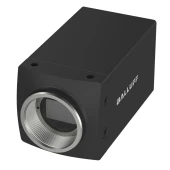
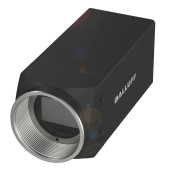
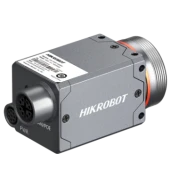
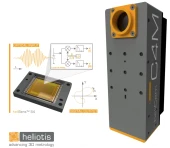
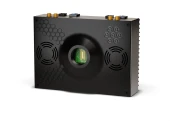
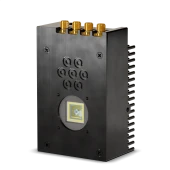
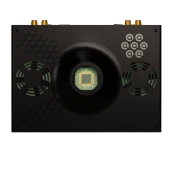
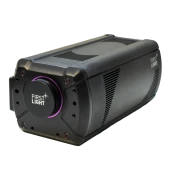
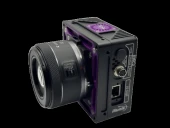
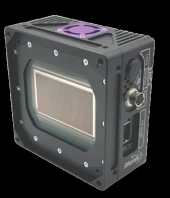
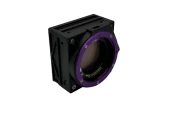
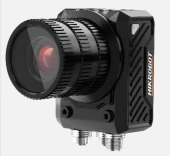
Your inquiry has been received.
Create an account by adding a password
Why create an account?
- Auto-complete inquiry forms
- View and manage all your past messages
- Save products to your favorites
- Close your account anytime — no hassle
